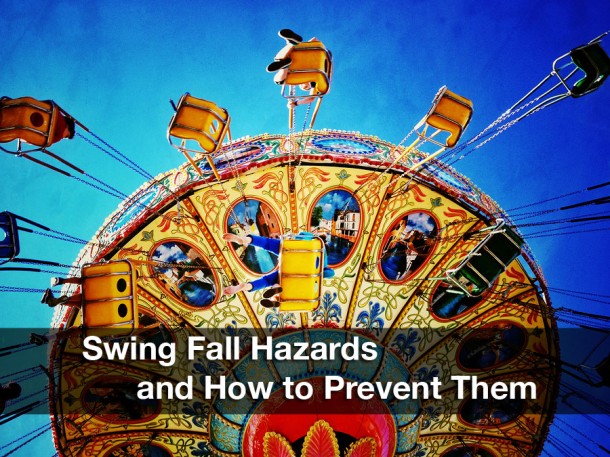Swing Fall Hazards and How to Prevent Them

Swing falls are not as fun as they might sound at first. In fact, in all seriousness, swing falls can be extremely dangerous. Unfortunately, many people, when working at heights, fail to take swing into consideration. So, just what is swing?
Swing is what occurs when you are wearing a Personal Fall Arrest System (PFAS – harness, lanyard, anchorage point) that is not anchored directly overhead. If a fall should occur, you would swing, like a pendulum, back toward the anchor point. In the process, you could strike – with great force – the structure you are working on or another nearby structure.

The above diagram depicts just one scenario. You certainly could be working in an area where there is no other structure to strike. Even if this is the case, there are still hazards to working outside of that 30° safe zone. Imagine your work level is 12 feet off the ground. In the course of your work, you wander 20 feet away from your anchor point – well outside your safe zone. If a fall occurs in this situation, you may not hit another structure, but you WILL hit the ground. Remember, retractable lanyards do not recoil during a fall, they just lock. The entire 20 feet of lanyard will remain played-out and you will strike the ground.
This is a very real problem. Most people don their harness and lanyard and give little more thought to their fall protection. They play the lanyard out as far as they can in any direction they need to go, completely unaware of the swing hazard until it is too late.
So, how do we prevent it?
Besides not going over the edge in the first place, the only way to prevent swing is to stay within a certain distance of your anchor point. When your lanyard is overhead (and remember, to keep your freefall to 6’ or less, your anchor point should be at least as high as the D-ring of your harness that your lanyard is attached to) you can avoid swing by staying within a 30° of your anchor point. The further you get from your anchor point, the further you’ll swing and the harder you’ll strike the structure.
Unfortunately, there is no blanket suggestion for how to keep your workers within that 30° safe zone. In some situations, available technology will help. For example, when your anchor point is an exposed I-beam running parallel to the edge, you could use trolley-type beam clamps that will roll along the beam as the worker moves, but that’s a pretty specific scenario. Horizontal lifelines will work for the same reason, but when your anchors are static, you need another option. Oftentimes, anchor points have to change location, so trying to paint or mark out the safe zone (especially in construction) could prove impractical.
Like most other safety hazards, staying safe boils down to awareness. Think back to your last fall protection training class. Was swing discussed? If not, you may want to set up a toolbox talk or safety meeting immediately to discuss the hazard with the affected members of your workforce. Let them know about the safe zone and that, should their work take them beyond it, they should stop and discuss the situation with your Competent Person. Swing can only be avoided when the worker knows it exists.
Remember: avoid the false sense of security. Injuries occur when proper fall protection isn’t used properly.


